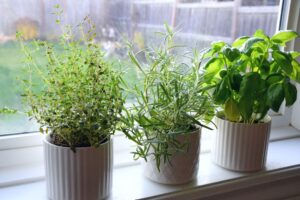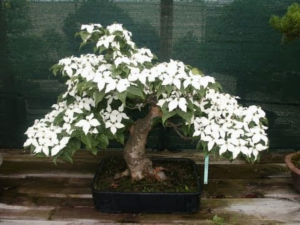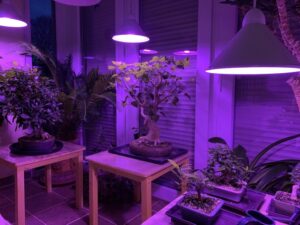Living creatures typically make appealing and exciting decorative items for the home, surprising but true. Indoor bonsai plants are the most practical and cost-effective option.
Bonsai plants are one of the most popular indoor plants for homes and offices. Indoor Bonsai plants are beneficial not only in terms of aesthetics but also in terms of health and psychological well-being. Indoor Bonsai plants are known for their ability to reduce stress. That is why people may find it adorning the desks of so many homes.
But out of all choices, which ones are the best picks for your home?
After the research, we have sorted out some of the best indoor bonsai plants for you.
15 Best Indoor Bonsai Plants
The beauty of indoor bonsai trees is unrivaled, and they may be the focal point of a room. Houseplants make excellent indoor bonsai plants examples compared to outdoor plants since they are significantly easier to grow and adapted to low light conditions.
1. Jade Bonsai
This shrub-like indoor bonsai tree sturdy trunk and leaves are sensitive to cold, making it suitable for indoor maintenance. Because jade indoor bonsai plants retain a lot of water in their leaves, don’t overwater them and make sure they’re in a well-draining container. You won’t have to do any training with it. It has the appearance of one.
These indoor Bonsai plants have not only lovely foliage but also has white flowers! It plays a role in bringing luck and success into the house will astound you. Feng Shui practitioners regard this as a luck-bringing entity that infuses the space with pleasant energy.
2. Hawaiian Umbrella Bonsai
Hawaiian Umbrella is the best indoor bonsai tree that is easy to grow and manage inside, making it ideal for beginners. It has glossy leaves on long petioles and looks pretty nice. This tree isn’t a fig; it’s an Araliaceae blooming plant, but it’s still very low-maintenance.
This indoor bonsai tree is beautiful yet hardy, thrives in both bright and dim light, is unafraid of water, and has a delightful adornment in the form of shining, tiny umbrella-shaped leaves atop many complicated trunks.
The Hawaiian Umbrella indoor bonsai Tree has a lovely appearance and is simple to maintain and grow.
3. Juniper Bonsai
These evergreen coniferous trees make excellent indoor Bonsai trees and may also be grown indoors. Make sure they get enough sunshine or use grow lights to augment it. Also, keep them as dry as possible.
4. Japanese Maple Bonsai
The Japanese Maple is known as one of the best indoor bonsai trees among Bonsai artists and cultivators because of its lobed leaves, color, and ease of sculpting into Bonsai form. Acer Palmatum is the scientific name for it. Although this indoor Bonsai plants thrive in a bright and breezy environment, you should keep them in the shadow during the hot hours of the day.
5. Ginseng Ficus Bonsai
Ginseng ficus may be a flourishing indoor bonsai plant because of its fat trunk, which gives it a mature appearance even while it’s young. It also doesn’t mind being in the shade! Though, place it in a spot that gets morning sun. Ficus retusa is a plant with the botanical name of Ficus retusa.
6. Dwarf Pomegranate Bonsai
Dwarf Pomegranate indoor Bonsai plants are scientifically known as Punica Granatum Nana and make exceptional indoor dwarf trees.
The tree produces brightly colored tiny blossoms that can delight anyone’s senses.
The Pomegranate Dwarf indoor Bonsai tree has a sturdy trunk and produces delicious pomegranate fruits that are little yet tasty. These species necessitate some upkeep. They require a decent quantity of sunlight and just the proper amount of watering to thrive beautifully.
7. Snow Rose Bonsai
The snow rose, also known as Serissa japonica, is a little tree with a woody stem that produces tiny leaves and a profusion of small, lovely flowers. It’s also known as “the thousand-star tree.” It can bloom anytime during the year, but it frequently blooms from early spring to late October.

Flowers are typically white, however pinkish and variegated cultivars are found. These indoor bonsai plants are sensitive to light, temperature, and water changes, and when they are stressed, they may lose some leaf momentarily. They do, however, usually recover quickly.
For beginners, the snow rose are a high-maintenance indoor bonsai plants that will shed its leaves if stressed, such as changes in temperature or watering schedules.
8. Chinese Elms
Chinese elms (Ulmus parvifolia) is not only a beautiful indoor bonsai tree but also one of the most convenient bonsai trees to grow. Their fast growth (and very predictable growth pattern), small leaves, wooden trunks, and short nodes make growing a healthy and attractive bonsai tree, even inside a home or office, relatively simple for beginners.
Most indoor bonsai plants species are more forgiving of underwatering and overwatering than these. They can grow in either good or bad soil if they are not let sit in water or entirely dry out.
9. Fukien Tea Bonsai
If planted in the ground outside, the Fukien tea tree, also known as Carmona retusa or Ehretia microphylla, can reach a height of more than a dozen feet. It does well indoors and is one of the most widely available mass-produced indoor bonsai plants.
It has little white blooms and small red fruits all year. The leaves are tiny, waxy, and bright green.
It performs best when exposed to brighter light for at least five to six hours each day. It will grow indoors, but it will benefit from spending time outside in the spring and summer.
10. Money tree Bonsai
Many regard the Bonsai Money Tree as a symbol of good fortune and prosperity for those who own one. Pachira Aquatica is the scientific name for this indoor bonsai tree, commonly known as Malabar chestnut, Guiana chestnut, provision tree, saba nut, and Pumpo.
The braided money tree is low-maintenance and appears like a trained indoor bonsai.
11. Malyan Banyan Tree Bonsai
Ficus microcarpa is the botanical name for this plant, and it is one of the best indoor bonsai trees. It has a light grey bark that contrasts beautifully with the light green, oblanceolate leaves 2 inches long.
While it can survive in brilliant indirect sunlight all day, it requires warmth and humidity to thrive as a houseplant.
12. Desert Rose Bonsai
A flowering succulent with a bulbous base gives it the appearance of a bonsai. This low-maintenance indoor Bonsai requires a sunny window to produce big tubular blossoms. It just necessitates minor maintenance.
Ensure there’s plenty of sunlight, and keep an eye out for aphids and spider mites.
13. Ponytail Palm Bonsai
First and foremost, it is not a palm; instead, it is a lily species (Asparagaceae). Regardless, it looks like a palm, and losing the alliteration for the sake of botanical truth would be a tragedy. The clusters of long, thin leaves arching and hanging gently from the trunk give it a palm-like appearance.
Because of its bulbous, scaly base, the Ponytail Palm is also known as Elephant’s Foot. The trunk’s design isn’t just for show; it also serves as a water reservoir, making it resistant to dehydration and relatively easy to maintain.
14. Ming Aralia Bonsai
Ming aralia is a little tree that rarely grows taller than 2 meters in the wild. Polyscias fruticosa is the botanical name for this plant. Its ferny, feathery leaves fall from beautiful, straight-growing slender branches, creating a multi-layered, complicated plant. The plant needs consistently moist soil to thrive, so be cautious when watering it.
It’s a little more demanding to grow than your usual plant, but the fluffy, bright green foliage is well worth the effort.
15. Norfolk Island pine Bonsai
Araucaria heterophylla is the botanical name for this plant. Norfolk Island pine is a great indoor plant that may be easily trained as a bonsai.
The plant would thrive in any location that receives 2-3 hours of direct sunlight. Because they are tropical plants, they cannot withstand temperatures below 35 degrees Fahrenheit. Another thing to remember about Norfolk pine indoor care is that they require a lot of humidity as a tropical plant.
When we have covered the best picks for home, the next question pops up in mind: Is there any benefit of keeping an indoor bonsai tree?
And, yes, there are many benefits of keeping indoor bonsai plants, and here are the reasons.
Indoor Bonsai Tree Benefits
Air-purifying Agent: Indoor bonsai Plants are well-known for reducing indoor air pollutants and purifying indoor air (including the ficus tree, a popular bonsai breed). Be careful that certain species filter more effectively than others.
Reduced Stress: Interacting actively with indoor bonsai trees can lower blood pressure and reduce psychological stress.
Well-being: Simply being in the presence of indoor bonsai plants can positively impact everything from stress levels to productivity to human mood.
Maintain Humidity: According to the study, keeping indoor bonsai plants can help with sore throats, coughs, and dry skin. It is due to plants’ ability to raise humidity levels in a place.
Develop Patience: Bonsai is a long-term goal-oriented art form. Indoor Bonsai tree takes a lot longer to grow than regular houseplants, so you’ll have to be patient. The caretaker of a bonsai looks to the future while tending to the present. In other words, regular care and attention to your tree will help you achieve your long-term objectives.
Beautify Any Size Space: A well-placed bonsai can bring the life of the outdoors into even the tiniest of places. This activity also allows folks who don’t have enough space for a garden or an enormous houseplant to interact with nature regularly. Feng shui practitioners can employ Bonsai to promote good fortune while taking up very little space.
Now when you know the perks of keeping the best indoor bonsai tree, do you know how to care for them? Some indoor bonsai plants require high maintenance while some, on the other hand, demands low maintenance. In any case, you should know some essential growing and caring tips for your indoor bonsai plants.
Indoor Bonsai Tree Growing and Caring Tips
Light: You should keep indoor Bonsai plants in window places to receive enough sunlight and light. Keep them outside if the weather is frigid so they can get some sun. However, it is preferable to keep them out of direct sunshine in the afternoons during the summer.
Poor light and exposure to the sun will stunt the growth of an indoor bonsai tree, eventually leading to its demise. If indoor illumination is an issue, use a light diode or fluorescent light for at least 10 hours every day.
Location: South-facing locations with light and ventilation are ideal for indoor bonsai trees, but the north is too dark. You should keep Bonsai trees on porches, lobbies, and balconies. It’s a good idea to take your indoor bonsai tree outside now and again.
Humidity: There’s a reason these indoor bonsai plants are labeled tropical. Consider using a humidity tray, misting your tree, and allowing warm air to circulate via an open window for your Bonsai. Keep watering them at regular intervals if it is humid or hot outside.
Water: Make sure your tree’s soil doesn’t grow too dry by keeping an eye on it. However, if you water too hard, it will wash the soil away. Some trees require watering regularly, while others may go for weeks without being watered. In addition, the soil should not be completely submerged in water. To minimize over-watering, it’s a good idea to use a moisture meter. Continue repotting the plant to compensate for the soil washed away.
Pruning: Pruning keeps the shape of the tree and ensures its health. Trim any sprouts that are affecting the tree’s general balance with scissors. You should do it regularly because it aids the tree’s holistic growth.
Conclusion
These indoor bonsai plants are a work of art and a vital component of nature that has raised the beauty factor to new heights. An indoor bonsai tree can create an incredible energy integration that can attract everything excellent therefore don’t wait any longer and order some bonsai trees for your home today!
Related Articles
- Bonsai, Cake and a Meaningful Gift for Birthday
- 9 Herbs To Grow Indoors All Year Round
- Needles Drying Out On Juniper Bonsai- Causes, Signs, and Treatment.
- How To Grow And Care For Dogwood Bonsai
- All About Grow Light- Best Grow Lights For Your Bonsai In 2024
- White spots on the leaves?- Powdery mildew on bonsai (identification and solution).





